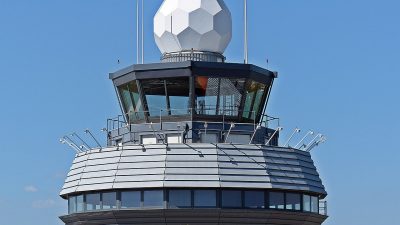How to Become an Air Traffic Controller in the USA: A Step-by-Step Guide
If you’re looking for a vital aviation career that doesn’t involve flying, becoming an air traffic controller could be the perfect path. Air traffic controllers are responsible for the safety and efficiency of air travel, ensuring airplanes and other aircraft move safely through the skies and on the ground. It’s a high-stakes job that offers great rewards for those who are up to the challenge. Here’s a step-by-step guide to help you understand how to become an air traffic controller in the United States.
What Does an Air Traffic Controller Do?
Air traffic controllers manage the safe movement of airplanes and other aircraft on the ground and in the air. They ensure safe distances between aircraft, prevent collisions, and direct traffic on runways and taxiways. Air traffic controllers work in three main environments:
- Control Towers: These focus on ground movement and the immediate airspace around an airport.
- Approach/Departure Control Facilities: These facilities handle airplanes and other aircraft arriving or departing from an airport within a certain radius.
- En Route Centers: These centers guide airplanes and other aircraft traveling long distances between airports.
Using radar systems, communication equipment, and their expertise, air traffic controllers ensure the smooth operation of air travel while maintaining safety as the top priority.
Basic Requirements
Before starting your journey, ensure you meet the Federal Aviation Administration’s (FAA) requirements:
- Be a U.S. citizen.
- Age restriction: You must apply before turning 31 years old (with some exceptions).
- Medical standards: Pass a rigorous FAA medical examination.
- Background check: Successfully complete a security investigation.
- English proficiency: You must speak clearly and effectively for all communications.
- Relocation flexibility: Be willing to relocate, as assignments are based on FAA staffing needs.
Step 1: Meet Education and Experience Requirements
To qualify as an air traffic controller, you must meet one of the following criteria:
- Earn a bachelor’s degree in any subject.
- Have three years of progressively responsible work experience.
- Combine education and work experience to total at least three years.
Pro Tip: Consider enrolling in an FAA-approved Air Traffic Collegiate Training Initiative (AT-CTI) program. These programs, available at select colleges and universities, are designed to prepare students for air traffic controller roles. While completing a program isn’t required, it gives applicants a significant advantage.
Step 2: Apply During the FAA’s Hiring Window
The FAA posts openings for air traffic controller positions once or twice a year. These hiring windows are typically brief—sometimes just a few days—so preparation is key.
- Create a USAJOBS.gov account.
- Set up job alerts for air traffic controller openings.
- Prepare your resume and application materials well in advance so you can apply immediately.
Step 3: Take the Biographical Assessment
If your application is accepted, the FAA will invite you to take the Biographical Assessment. This test evaluates your work habits, personality traits, and experiences to determine if you have the right characteristics for an air traffic controller role.
Step 4: Pass the Air Traffic Skills Assessment
Candidates who pass the Biographical Assessment move on to the Air Traffic Skills Assessment (AT-SA) exam. This test measures your ability to multitask, problem-solve, and make decisions quickly—skills that are crucial for air traffic controllers.
Pro Tip: Scoring well on the Air Traffic Skills Assessment improves your chances of being selected. Many applicants prepare with study guides or practice tests.
Step 5: Receive a Tentative Offer Letter
If you perform well on the Air Traffic Skills Assessment and meet all other requirements, the FAA will send you a Tentative Offer Letter. This indicates that the FAA wants to move forward with you in the hiring process, though it is not a final job offer.
Step 6: Medical and Security Clearances
After accepting the Tentative Offer Letter, you will complete:
- A medical examination: This ensures you meet FAA standards for vision, hearing, and overall health.
- A security background investigation: This ensures you are eligible to work in this sensitive role.
Step 7: Attend FAA Academy Training
Once you pass all preliminary requirements, you will attend training at the FAA Academy in Oklahoma City. This program prepares you for the technical and mental challenges of the job.
- Terminal controllers (those working in control towers): 3-month program.
- En route controllers (those managing high-altitude traffic): 6-month program.
The FAA Academy is rigorous, with a high washout rate. You’ll need to stay focused, study hard, and perform well to graduate.
Step 8: Complete On-the-Job Training
After graduating from the FAA Academy, you’ll begin on-the-job training at your assigned facility. This is where you will:
- Work alongside experienced air traffic controllers.
- Practice managing real-world air traffic situations under supervision.
- Progress through several phases of training until you achieve full certification, which typically takes 1.5 to 3 years depending on the complexity of your assigned facility.
Career Growth and Salary
Air traffic control is one of the most rewarding careers in aviation, offering excellent pay and benefits. According to the Bureau of Labor Statistics, the median annual salary for air traffic controllers was $129,750 as of May 2021.
As you gain experience, you can:
- Advance to more complex facilities, which offer higher pay.
- Take on leadership roles, such as managing other air traffic controllers or training new hires.
- Transition into specialized positions within the FAA.
Skills for Success
To excel as an air traffic controller, you’ll need:
- Clear communication skills: You must provide concise and accurate instructions to pilots.
- Quick decision-making: The ability to make rapid, sound decisions under pressure is crucial.
- Strong problem-solving skills: You’ll need to anticipate and resolve potential conflicts in airspace.
- Attention to detail: Precision is vital, as even small mistakes can have serious consequences.
- Calm under pressure: The work environment is fast-paced and stressful, requiring focus and composure.
Final Thoughts
Becoming an air traffic controller requires dedication, focus, and perseverance. The process, from application to full certification, can take several years, but the result is a challenging and rewarding career that plays a key role in aviation safety.
Remember, FAA requirements and procedures may change, so always consult official FAA resources for the latest updates.
Are you ready to guide airplanes and other aircraft safely through the skies? With commitment and preparation, you can take on this exciting career and make a meaningful contribution to the world of aviation.




[…] Thinking about a career as an air traffic controller? Explore our step-by-step guide: How to Become an Air Traffic Controller in the USA! […]